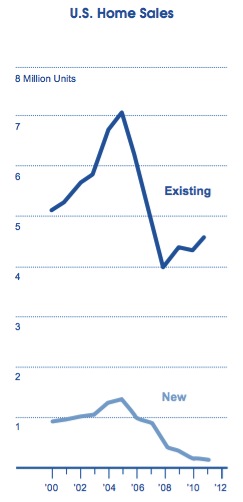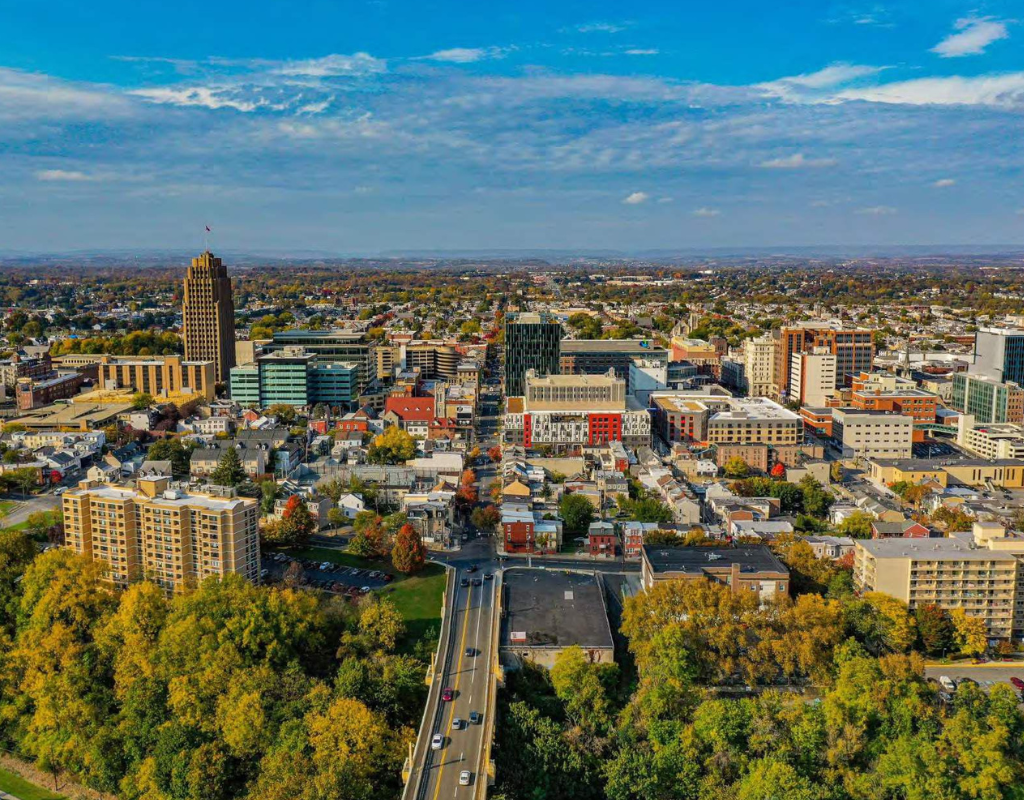This morning, a Minnesota Public Radio host asked me if the exurbs, whose growth rate flattened when the recession hit, are going to come back. Lots of people from far-distant suburbs like Blaine and Farmington called in, saying they like the way of life out there – they like having acres of trees buffering them from their nearest neighbor -- and people won’t want to stop living in communities like that.

The data suggests otherwise, though. Earlier this week, the Demand Institute (a think tank created by the Conference Board -- "a global, independent business membership and research association" -- and Nielsen -- yeah, the TV ratings people) released a report on the housing recovery. They say the worst of the housing crash is over and glimmers of recovery are on the horizon. But hope isn’t spread out uniformly across these United States. Those exurbs like Blaine and Farmington, Minnesota? They’re not coming back so fast.
Urban areas didn’t lose as much value during the recession. Home prices didn’t crash so hard. Not so many people found themselves under water, owing more on their mortgages than their homes are worth. And urban areas are bouncing back faster. The Demand Institute calls these places “Resilient Walkables.” Only 15 percent of the U.S. population lives there.
The report bases its prognosis for recovery on seven factors: population size, walkability, severity of the crash, current affordability, unemployment, foreclosure inventory, and foreclosure policy. The Institute found what Angie noted earlier: Walk Score is positively correlated with strong housing prices. The Institute’s analysis of almost 1,700 U.S. cities showed that walkable cities had more positive price growth.
And it found that these “Resilient Walkables” were resilient indeed, with house prices projected to rise three percent next year and five percent a year for the four years after that.
Compare that to the places the Institute calls “Slow and Steady” – where more than a third of Americans live and where double-digit housing declines destabilized the market. Economic indicators are gloomy for these areas, but the authors find the planning solid, so the future is relatively bright. These are places like Charlotte, NC, Dallas and semi-urban D.C. suburbs like Gaithersburg, MD, and the study forecasts three percent growth starting in two years.
Then there are the “Damaged But Hopeful” areas – a category that encompasses big but depressed cities like Chicago and smaller ones like Stamford, CT. Thirty percent of Americans live in these places, too many of them fighting foreclosure. It will take them a little longer to get to three percent growth but from 2017 onward, the Demand Institute predicts that they’ll beat the national average.
And then there are the exurbs and small suburbs. Twenty percent of Americans live there, but perhaps not for long. The report classifies them as “Weighed Down” – by precipitous price drops and high foreclosure rates. “The fact that housing is relatively cheap compared to the national average will not greatly assist recovery,” the report states. “Indeed, long-term prospects are most uncertain. We do not expect price rises to reach the national average even by 2017.”
The relative cheapness of land was the big draw out to new suburbs over the past few decades. The report seems to be foretelling the end of “drive till you qualify.”
The authors also predict the rental market will grow faster than the homebuyer market, and they say house size will shrink, as necessitated by the mass gravitation to a denser development pattern. Houses are already smaller now than their peak of 2,500 square feet in 2007, and the study forecasts they will shrink by another 10 percent by 2015 to about 2,150 square feet – still plenty of space.
So, while some people are content with the wide-roads-and-big-yards way of exurban life, many more are getting out – as soon as they can sell their house, which for many, won’t be anytime soon. Those who can are fleeing the toxicity of foreclosure, the soul-sucking commutes at $4+ a gallon, the dead street life.
And young families, who in the last decade fueled outward growth with their zeal for big houses with small price tags, are pulling back now. When they move out of their parents’ basements they’ll be looking to rent instead of buy. Home ownership rates among people in their early twenties has gone down 17.5 percent, while the home ownership rate for all age groups is down less than three percent.
It’s all part of a pendulum swing back from the mass drive out to the suburbs in the postwar period. According to this research, the growth is now in cities and close-in suburbs that offer a mix of uses within easy and pleasant walking distance. Transit plays a role too, as one major amenity being sought in urban areas is access to public transportation, “a significant advantage as traffic pressure in major metropolitan areas worsens owing to limited investment in road infrastructure,” the report says.
Some of the callers this morning made their outer-ring lifestyles sound lovely and bucolic. One of them said he and his wife both worked from home, so one of the major downsides of the exurbs – the commute – was a moot point for them. That may be, but they are increasingly isolated in their decision to live in that kind of place. As Chris Leinberger has noted, the places that were supposed to be a refuge from urban crime are finding that big-city problems have followed them. Nothing destabilizes a neighborhood like a vacant house – even if that house is a McMansion.





